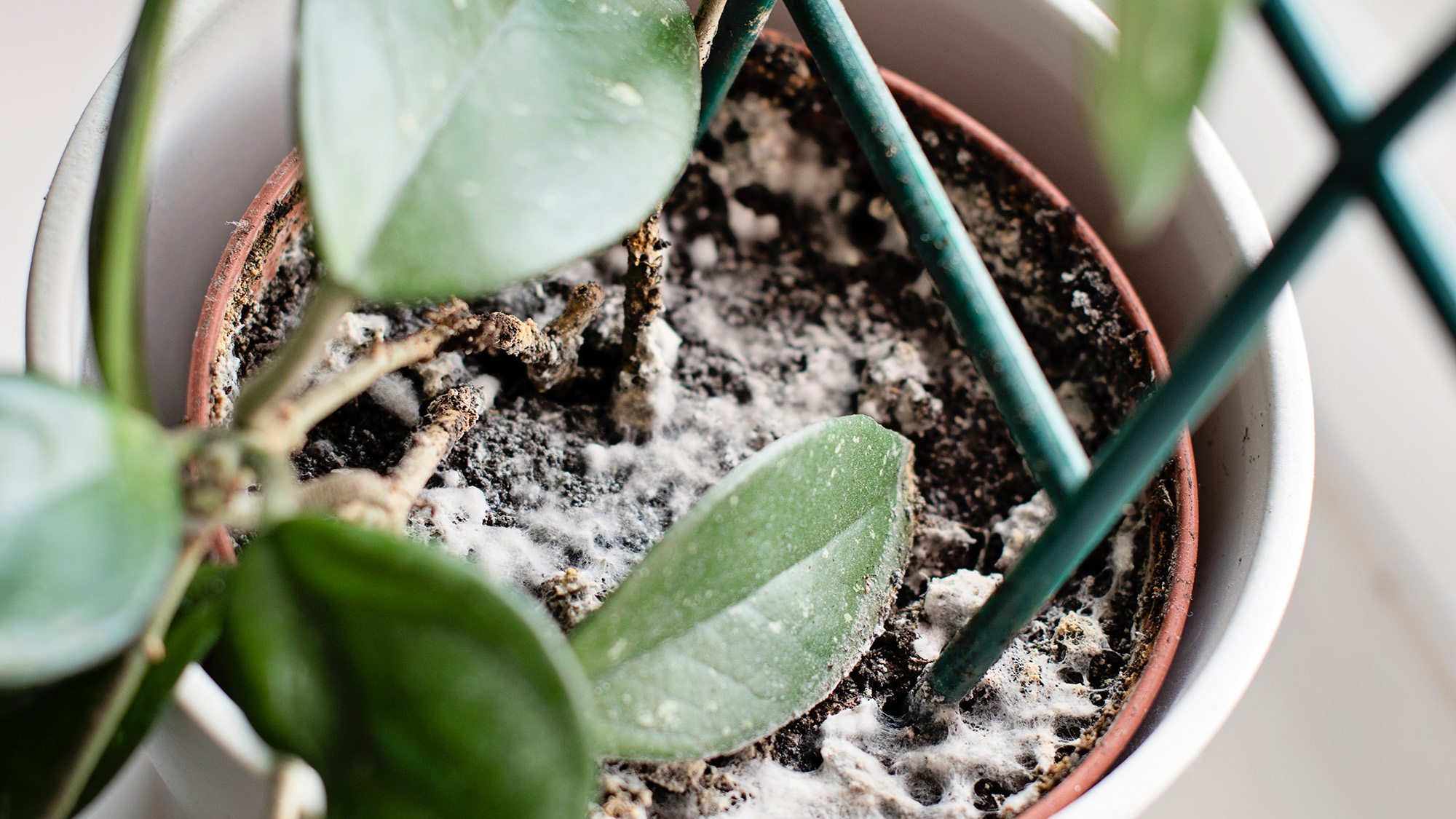
I enjoy having a range of houseplants in my home, and especially when the weather turns, I get to enjoy greenery without having to step outside. And apart from bringing me joy and adding a natural aesthetic to my home, they have many other benefits, including easing stress and boosting your mood, making your house smell nicer.
However, I’ve recently spotted a white fuzzy substance on top of my houseplant soil, and apart from looking unattractive, I wanted to find out if I was making a mistake with my plant care. So, I turned to Leena Pettigrew at Plantasmic to ask what causes the white substance and how to bring my houseplants back to full health.
What is the white fuzzy substance on my houseplant soil?
“White soil on houseplants often indicates mold or a type of fungus,” explains Pettigrew, and she adds, “Other causes can be minerals and salt build-up from tap water and fertilizers.”
Now I know what it is, I need to find out what causes it, and how to put it right.
“Usually, poor drainage and overwatering cause mold and bacteria to grow because they thrive in moisture,” she explains.
And Pettigrew adds, “When white mold appears, it can be a sign that the soil is too wet, the surroundings are too humid, and possibly too much organic matter in the soil.”
The problem can also be caused by minerals and salts. Pettigrew explains that the minerals in tap water and from too much fertilizer accumulate on the surface of the soil.
However, there is some good news.
“Usually, the appearance of this powdery mildew is worse than the actual damage and is not fatal to the plant,” says Pettigrew.
And the problem is easy to remedy. Pettigrew recommends scraping the mold off the soil surface and placing the pot in an appropriate, well-ventilated area, which will allow the soil to dry out.
But, she warns to watch how much and how often you water your plants. She advises it’s best to let the soil dry out between waterings, and if it’s mineral build-up, she says, “Try watering with distilled water to flush out the soil, and reduce fertilizer use.”
How to prevent mold from forming on your houseplant soil
To avoid the same problem happening again, Pettigrew’s first piece of advice is to avoid overwatering and always test the soil moisture with your fingers or a moisture indicator. She also advises using a well-draining potting mix specifically designed for indoor plants, and selecting the right pot for optimal drainage. You definitely need to find a pot with decent drainage holes.
She also suggests spacing houseplants at a distance to create air circulation, which will help reduce humidity — something that mold thrives on. Plus, she says, “Always remove dead plant material and decomposing matter on the soil’s surface to prevent dampness, which encourages mold growth.”
Placing your plant in sunlight will also help. “Make sure your plant receives enough exposure to sunlight to help prevent mold, because most types of mold do best in dark, damp environments,” she adds.
If you find the mold comes back or the soil stays wet, she suggests repotting the plant with new, sterile potting soil. And she even suggests making your own fungicide by mixing baking soda with a water mixture.
If your problem is caused by mineral and salt build-up, she recommends checking your plant’s drainage regularly to ensure water does not sit in the soil, which could lead to root rot and unhealthy conditions for the plant.
Follow Tom’s Guide on Google News and add us as a preferred source to get our up-to-date news, analysis, and reviews in your feeds. Make sure to click the Follow button!
More from Tom’s Guide



